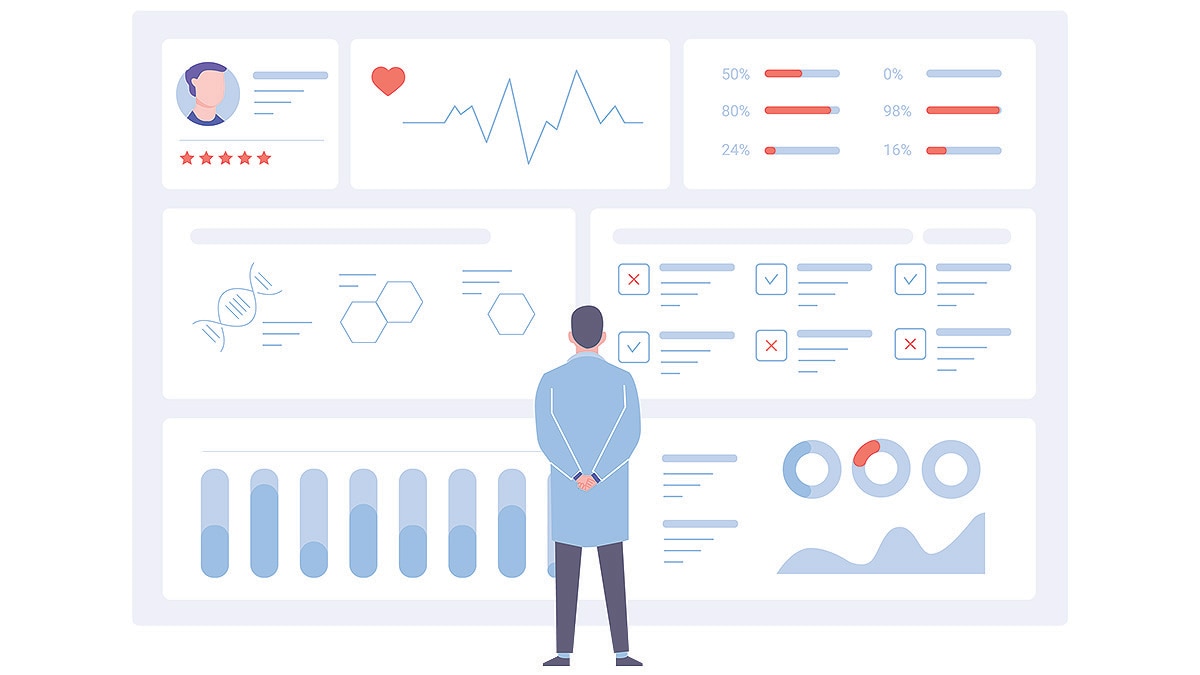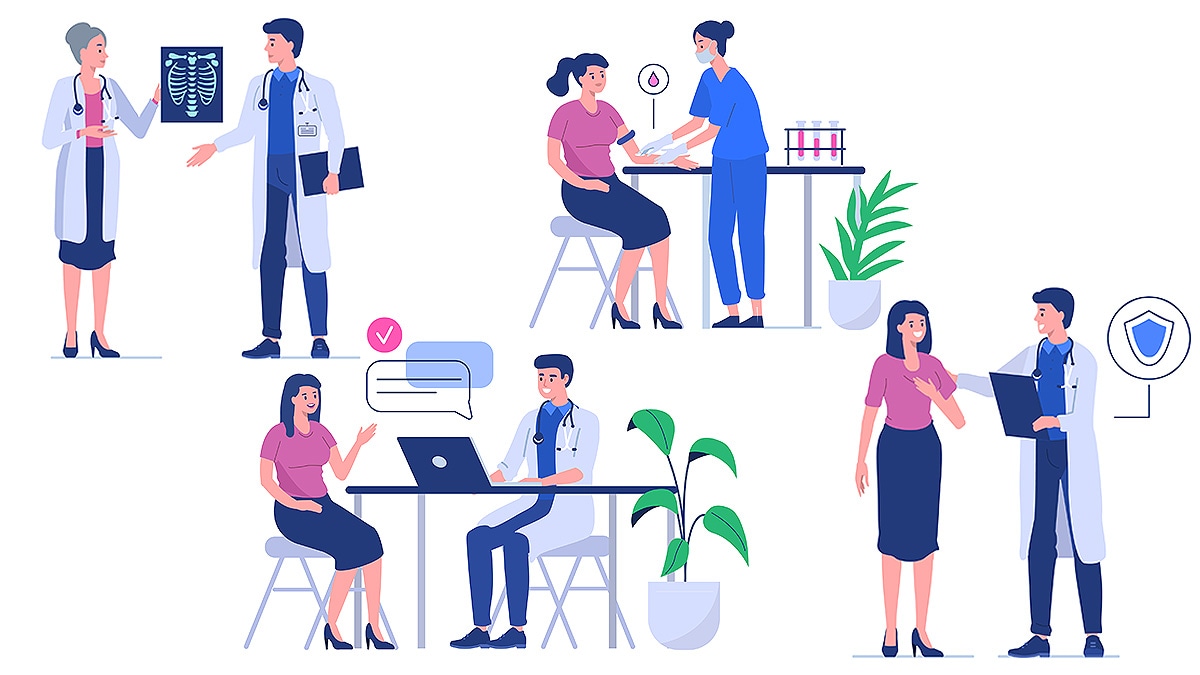Key points
- Untreated inflammatory bowel disease (IBD) can lead to more serious health problems.
- It is important to talk to your doctor if you notice IBD symptoms so you can start managing and treating it right away.
- To diagnose IBD, a doctor may do physical exams, lab tests, endoscopic procedures, and radiographic procedures.

Why get tested

It is important to catch IBD early
IBD is complex and progressive—meaning it can quickly worsen and cause more serious problems.
Catching it early allows you to prevent it from worsening and quickly manage symptoms.
People usually first notice IBD during a flare-up of symptoms.
- Most people are diagnosed by age 30.1
IBD requires a diagnosis from a doctor
Most of the time, a gastroenterologist—a doctor specializing in the digestive system—oversees IBD care.
Your doctor will determine:
- If you have IBD.
- What type you have.
Types of tests

Office visit
In an office visit, the doctor will conduct a physical exam and ask questions about your general health, including:
- Symptoms.
- Current medications.
- Family history.
- Home and personal life—to identify major stresses or recent life changes.
- Lifestyle and daily routine—to understand your diet, physical activity level, and overall well-being.
Next, they may test your blood or stool (poop). Some tests are common for all types of IBD, while others are specific to each type.
Laboratory tests
Laboratory tests examine samples of your blood, body fluid, or tissues in order to get information about your health.
- Blood tests: detect inflammation, infection, and anemia.
- Stool tests: detect blood or mucous, as well as other problems with the digestive system.
Endoscopy
An endoscopy is a procedure used to look at the digestive tract. These procedures use a camera that is inserted with a thin, flexible tube, or swallowed in a capsule.
Common endoscopic procedures include:
- Colonoscopy: This looks at the whole colon.
- Flexible sigmoidoscopy: This looks at the final section of the colon.
- Sigmoidoscopy: This looks at the lower colon and rectum.
- Upper endoscopy: This looks at the GI tract, from the top down.
Radiography
Radiography captures images of internal body structures, such as tissues, organs, bones, and vessels.
When diagnosing IBD, computed tomography (CT scan) or magnetic resonance imaging (MRI) are used to capture images of your intestines.
- CT and MRI scans can show the amount of inflammation, and if there are complications.
- Lewis JD, Parlett LE, Jonsson Funk ML, et al. Incidence, prevalence, and racial and ethnic distribution of inflammatory bowel disease in the United States. Gastroenterology. 2023;165(5):1197-1205.e2. doi:10.1053/j.gastro.2023.07.003
- Agrawal M, Spencer EA, Colombel JF, Ungaro RC. Approach to the management of recently diagnosed inflammatory bowel disease patients: A user's guide for adult and pediatric gastroenterologists. Gastroenterology. 2021;161(1):47-65. doi:10.1053/j.gastro.2021.04.063
- Sandberg K, Yarger E, Saeed S. Updates in diagnosis and management of inflammatory bowel disease. Curr Probl Pediatr Adolesc Health Care. 2020;50(5):100785. doi:10.1016/j.cppeds.2020.100785
- Rubalcava NS, Gadepalli SK. Inflammatory bowel disease in children and adolescents. Adv Pediatr. 2021;68:121-142. doi:10.1016/j.yapd.2021.05.005
